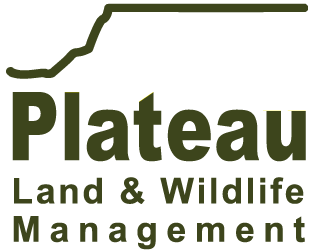The Economic Value of Open-Space: A Refresher on Why It Matters
When tax bills began arriving in the fall, you were no doubt reminded of the economic benefit of having a wildlife or agricultural valuation in place. Whenever the Texas Legislature is coming into session, we at Plateau are often asked, “Are they going to take away my wildlife or agricultural valuation?” And as certain as death and taxes, we should expect at least one or two newspaper articles next spring about how some landowners are getting tax “exemptions” for having a few cows or some wildlife on their property and thus not paying their fair share. You are no doubt aware of many of the benefits of open-space, but if you find yourself or someone else asking these questions, here’s a refresher.
There is strong protection built into the way the open-space (ag/wildlife valuation) law is structured, which should ease your mind a little. The laws that allow for a special valuation on open-space agricultural and wildlife lands are required by the Texas Constitution Article VIII, §1-d-1, which says that the legislature “SHALL provide by general law for taxation of open-space land devoted to farm, ranch, or wildlife management purposes on the basis of its productive capacity…” (emphasis added).
This means that the legislature cannot simply pass a law to eliminate these special valuations. They can change the rules and requirements, but they cannot eliminate it without amending the constitution – only the people of Texas can do that.
The premise that landowners enjoying the benefits of wildlife and agricultural valuations are not paying their fair share is a flawed one. To start, these are not tax “exemptions” they are special valuations designed to tax land on its productive capacity instead of its market value. The truth is that owners of open-space land are helping to make up for deficits in delivering services to residential property. According to a compilation of studies from across the country by the American Farmland Trust, the median cost to provide services to working and open-space lands is only $0.37 for every dollar raised in tax revenue from those lands. This ratio is also known as the Cost of Community Services (COCS) ratio. The open-space land ratio is comparable to the ratio for commercial lands ($0.29/$1.00). In contrast, providing services to residential land costs $1.19 for every dollar raised. That means it costs more to provide services to all those people and houses than they pay in property taxes.
Texas lands are no different. Three counties in Texas had ratios ranging from 0.18/$1.00-0.33/$1.00, which means that Texas open-space land is even more cost-efficient than the national median. Despite the substantially higher revenues that residential use brings in over open-space land with those special valuations on it, the infrastructure and service needs for all that open-space land are much lower. As David Langford of the Texas Wildlife Association has said: “cows don’t go to school, songbirds don’t call 9-1-1, and crops don’t require the ‘jaws of life’ or Medivac helicopters after Saturday night smashups on the freeway.”
And remember, you are still paying market value on all the structures (if any are present) and the associated residential land on your property. The only land receiving the tax break is that used for wildlife or agricultural purposes and that land requires virtually no government services.
Of course, there are lots of intangible and difficult to quantify reasons to support open-space including improved water quality, wildlife habitat, scenic views, etc. As wildlife biologists, these mean quite a bit to the Plateau team. As taxpayers, though, it is nice to see that the economics make sense as well.
As the 86th Legislative Session continues, remember to encourage your representatives to support open-space. Even though they cannot eliminate ag/wildlife valuations without a constitutional amendment, they can adjust the rules to make it more difficult to qualify. And for anyone who wants to do away with them, remember that if that occurs, lots of land will hit the market with the resulting rapidly increasing taxes, driving prices (and tax revenues) down. And never forget that conversion of land to residential use may result in more tax revenue, but that comes with higher costs to the state and local governments who provide essential services, erasing any benefit to government coffers.





Sorry, the comment form is closed at this time.